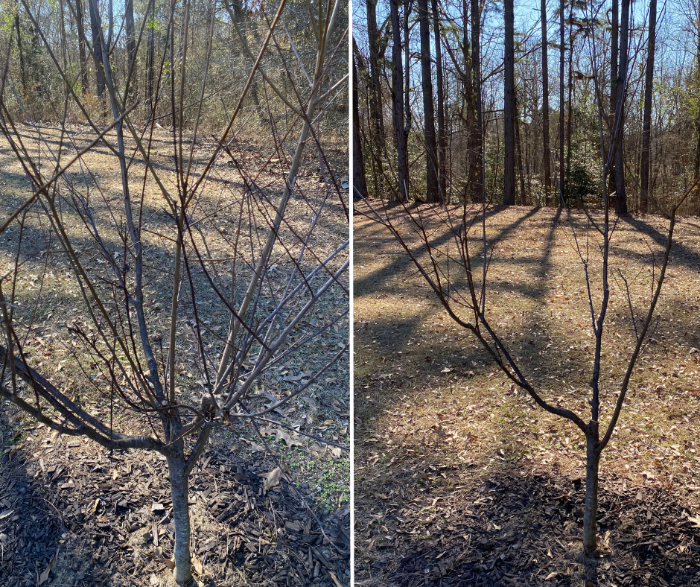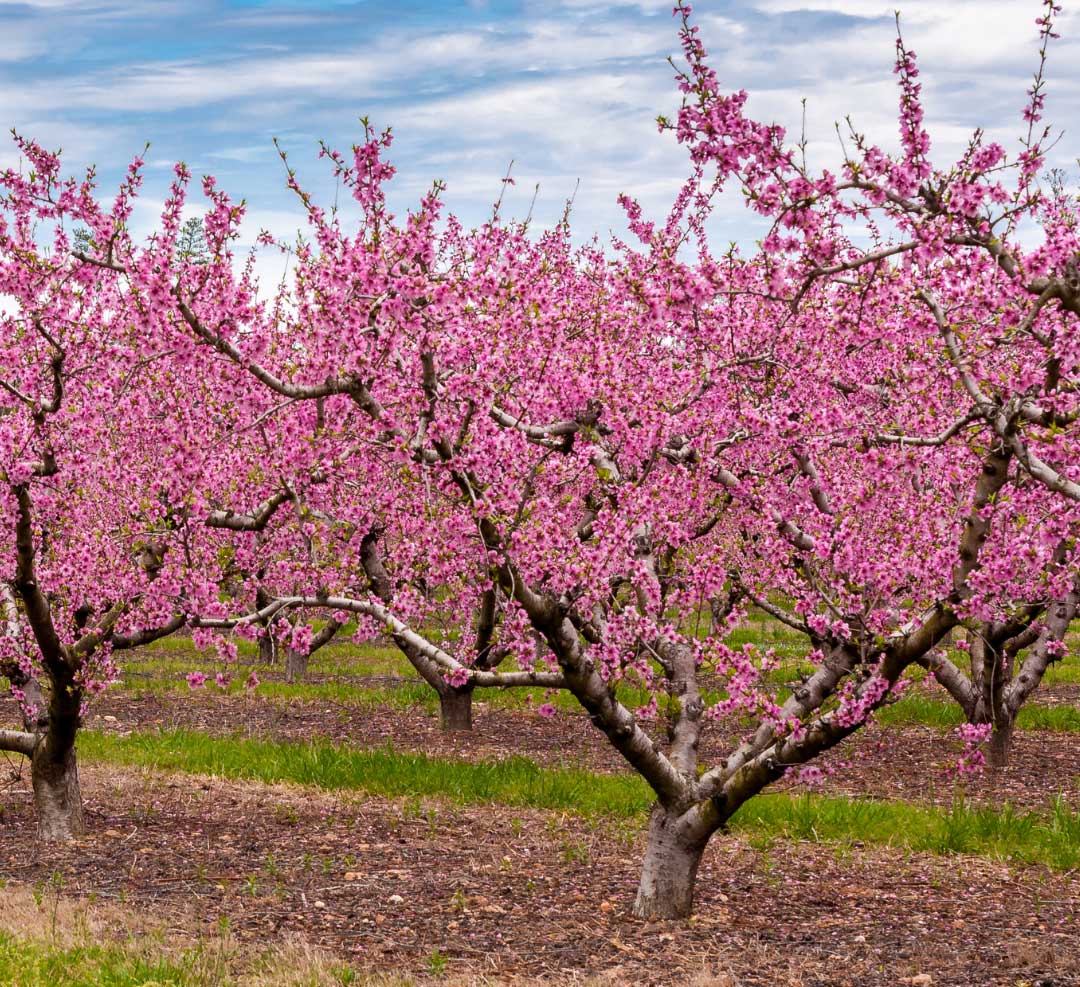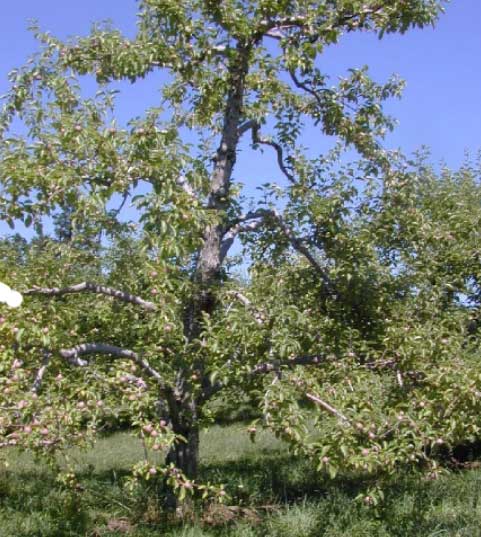Self Sufficient U
Clark County Extension Service
Amy Simpson, Horticulture
Cindy Ham, 4-H and Ag
JoAnn Vann, Family & Consumer Sciences
Phone: 870-246-2281
Email: clark-arkadelphia@uada.edu
Follow us on
Facebook
Clark County
Cooperative Extension Service
640 S 6th Street Suite B
Arkadelphia, AR 71923

Above: Plum tree pruned to an open center.
How to Prune Fruit Trees in Arkansas
by Amy Simpson
February 15, 2022
It’s February, and in the south that means its "Prune-Almost-Everything" time. This includes fruit trees, small fruits, most roses, and many other flowering trees and shrubs. For gardeners, it’s an exciting time because it means we’re on the last leg of winter, and spring is just around the corner.
If you have a home orchard (and as far as I’m concerned, if you just have a couple of fruit trees, that counts!) and want to be more confident in your pruning, then this blog is for you. In Arkansas apples, pears, and stone fruit including peaches, plums, and nectarines all do well, although those stone fruit can be high-maintenance divas, but I’ll save that for another day.
Don’t know which tree fruit varieties do well in Arkansas?
Read our Tree Fruit Cultivar Recommendations for Arkansas publication.
THE WHEN, WHY & HOW OF PRUNING FRUIT TREES
When to prune fruit trees

In Arkansas, we typically prune fruit trees in February. However, in large orchards they start pruning earlier in the winter to allow enough time to get them all done. It is less stressful on the plants during this season because they aren’t actively putting their energy into new growth and flowering. It’s also a lot easier to see what you’re doing when there aren’t any leaves, and the chance for insects to infect the new cuts is much lower in the winter. To maximize tree health and fruit size, it is good to prune your fruit trees yearly.
Dead or diseased wood can be pruned out any time of the year. Just make sure you’re disinfecting your loppers, pruning shears, or saw between each cut to avoid spreading disease. Use a 1 part bleach to 9 parts water solution for disinfecting.
Why do you prune fruit trees?
Why is pruning fruit trees necessary? There are several reasons:
- It opens up the canopy, allowing more air flow which can help minimize disease pressure.
- It allows more sunlight into the tree, which improves the quality of the fruit and increases buds for the next year.
- Strategic pruning creates strong scaffold limbs, which in time will allow it to support a heavy fruit load.
- It reduces fruit-load, which then allows the remaining fruit to grow to an acceptable size and keeps the branches from being overburdened with weight.
- Pruning keeps the overall height and spread of the tree at a manageable size. I personally don’t want to get on a ladder to harvest my plums, so I keep them pruned where I can reach the fruit at the top from the ground.
How to prune fruit trees

How you prune your fruit tree depends on the kind of tree it is.
- Apples and pears we prune to have a main central leader.
- Peaches and nectarines we prune to have an open center.
- Plums can go either way. I personally have pruned mine to an open center.
Pruning a tree to have a central leader means establishing a central trunk with well-balanced scaffolding limbs radiating from it. You want to train these branches to have wide crotch angles (60-80 degrees) with the trunk. You can make your own limb spreaders or they are easily available online and at garden centers to help you accomplish this. Just remember it needs to be done with the branches are young and pliable. Make sure the branches are evenly dispersed around the trunk.
Pruning for an open center is just as it sounds.
There is no central leader and the branches form an upside down umbrella shape. This method helps improve yield and quality of stone fruit. Typically two to five scaffold limbs are left, spaced evenly apart around the trunk.
For both methods, the first three years after you plant is critical to getting your scaffolding right. After the first 3 years, your tree structure should be established, so you switch to pruning to increase yield and quality.
For details on how to train fruit trees in both the central leader and open center methods for each year of production, check out our Pruning Fruit Trees fact sheet.
If you would rather watch a video to learn, watch our Peach Tree Pruning and Apple Tree Pruning videos that demonstrate open center and central leader methods.
Just remember it’s important to prune your fruit trees in the dormant season to improve the health, yield, and quality of your trees and fruits. Be sure to refer to any of the before-mentioned Extension resources to help guide you on how to do it correctly, and as always, contact your County Extension Agent if you have any questions.
Related resources
Grow Your Own Groceries:
Gardening from the Ground UP:
Beekeeping - Apiculture in Arkansas
Take the Hobby and Small Flock Poultry in Arkansas course
Arkansas Food Freedom Act for homemade food sales
Arkansas Emergency Preparedness
Food Preservation
Podcasts:
Around the Homestead Podcast:
Beekeeping Basics Podcast